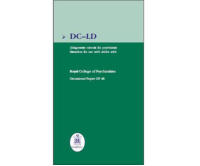
Module 3 - Assessment of Mental Health for People
with an Intellectual Disability
Difficulties in classifying mental health problems for people with
intellectual disability.
• The classification systems were designed using the general population, as people with an intellectual disability are often excluded from research because they often cannot consent to participate in research or are unable to complete the assessments. • People with an intellectual disability may lack the verbal and conceptual skills to describe their problems. • People with an intellectual disability may not have developed to the extent where they can experience the same range of thoughts and emotions. For example, you have to achieve a particular level of emotional and cognitive development to be able to experience and identify a feeling of guilt. This may mean that some people with an intellectual disability cannot develop certain symptoms that form part of some illnesses. • People with intellectual disability commonly present with ‘behaviours’ rather than verbal complaints • Some behaviour is only common in people with an intellectual disability and so has not been included in the classifications for mental illness. Self-harming behaviours such as skin picking or repetitive head banging are examples of this. • Some specific causes of an intellectual disability are associated with certain behaviours that have not been included as mental illness. For example, should the overeating evident in Prader-Willi syndrome be classified as a separate psychiatric disorder?Classification of mental illness in people with intellectual disability
Because of the difficulties listed above, diagnostic criteria for people with learning disability (DC-LD) have been developed and can be used when the person’s disability is severe enough that their symptoms differ from the general population. DC-LD has fewer categories and this reflects the fact that it may not be possible to elicit the symptom complexities to make a more specific diagnosis in people with intellectual disability (as above).














